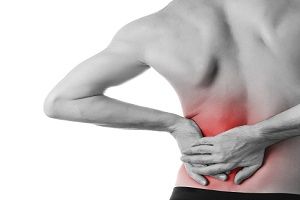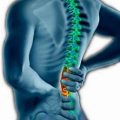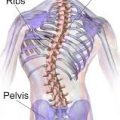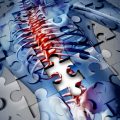What is Degenerative Disc Disease?
Though its name makes it sound like it’s a progressive, life-threatening, chronic disease. Degenerative Disc Disease, also referred as DDD, or back pain degenerative disc, is actually quite a misnomer. It is neither degenerative nor a disease. Rather, it’s a term used by medical professionals to describe the condition of the spinal cord; that resulted primarily from ageing. The intervertebral disc (intervertebral fibrocartilage); or better known as spinal disc, is a fibrocartilaginous joint that lies between the vertebral column’s adjacent vertebrae and hold them together. Its basic function is to provide a soft cushion between two bones and work like a shock absorber; as well as allow the spine to twist, flex and bend. Degenerative disc disease occurs on the spine; and commonly found in lower back (lumbar) and upper back or cervical (neck) region.
Back pain degenerative disc happens when spinal discs lose their water, mainly because of age or disease; which results to thinning, brining each ends of vertebra closer to each other. This will cause the nerve opening of the spine to narrow as well. Without the shock absorbers, bones can grind together making it painful to perform even simple tasks such as walking, running, or jumping. Poor posture, wear and tear as well as wrong body movements can also cause the spinal disc to weaken and degenerate through time.
DDD changes the structure of the spinal disc, and this result to pain. Many times, it develops to more chronic medical conditions; such as osteoarthritis (damage on the cartilage or tissue surrounding the joint), herniated disc (abnormal bulge or breaking of spinal disc open); and spinal stenosis (degrading of space between the spinal canal that holds the spinal cord). These conditions all come with pain, as the nerves on the spinal cord are constant pressure, affecting their nerve functions.
What Causes Degenerative Disc Disease?
As our body ages, many physical and contributory factors can contribute to the breaking down or degeneration of our spinal disc. Some of the common age-related changes include:
- Spinal disc fluid loss
The loss of fluid from the spinal disc thins the fibrocartilage, losing flexibility; and reducing its “shock absorbing” capability, as the distance between vertebrae narrows.
- Cracks and tiny tears in spinal disc’s outer layer (capsule or annulus)
These cracks and tiny openings will cause fluid from the spinal disc to bulge or even break open; causing the disc to rupture or even break into fragments. These changes in the quality of the spinal disc are common among cigarette smokers; and those who are regularly exposed to heavy physical work on (repeated heavy lifting). Also, too much weight can cause stress to the bones and can contribute to DDD symptoms.
- Trauma and accidents such as falling, which damages the spine and leads to herniated disc condition.
As spaces between the spins gets thinner, vertebrae gets lesser padding between each end, causing the spine to become unstable. To cope with this change, our body reacts by making bony growths we call bone spurs or osteophytes. These however, puts a lot of pressure to the spinal nerve roots (the spinal cord); which results to pain and affects the functions of the nerves. We normally call this back pain degenerative disc.






 I love to write medical education books. My books are written for everyone in an easy to read and understandable style.
I love to write medical education books. My books are written for everyone in an easy to read and understandable style.